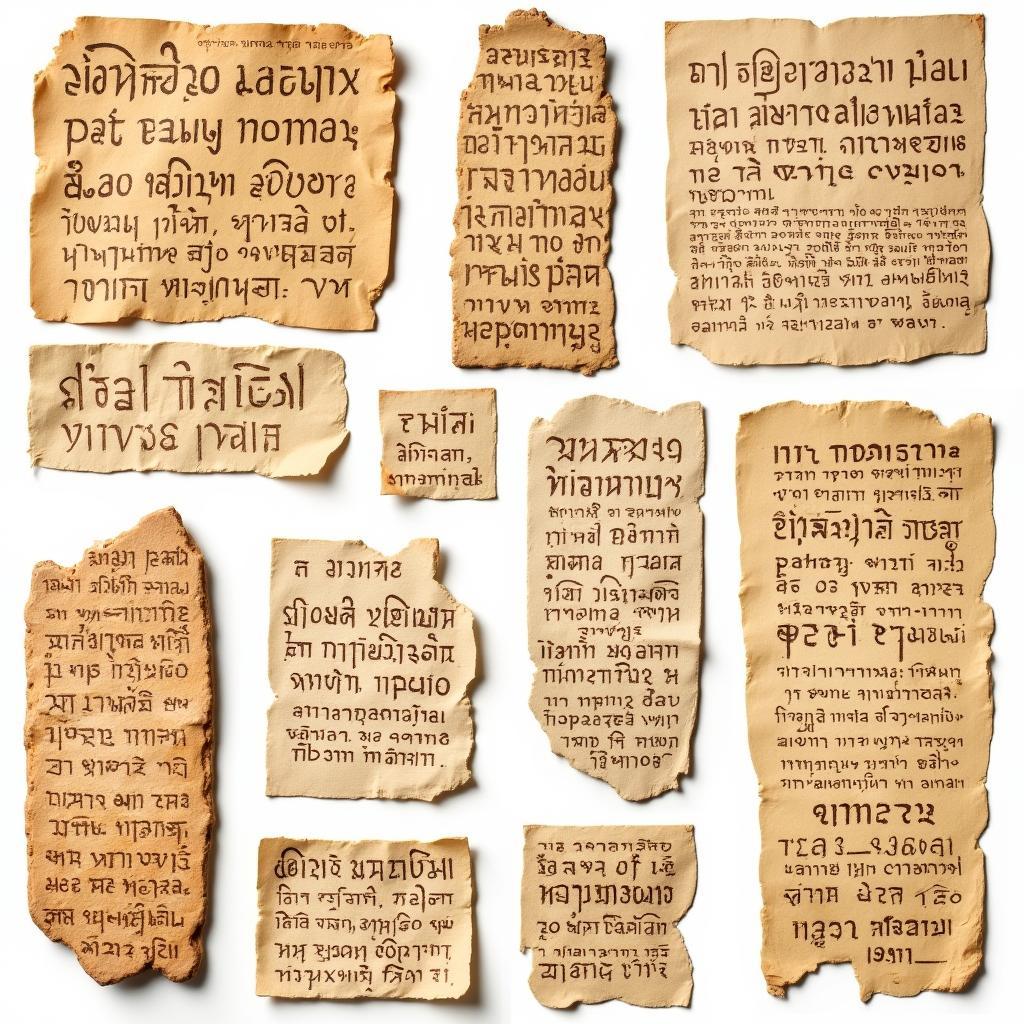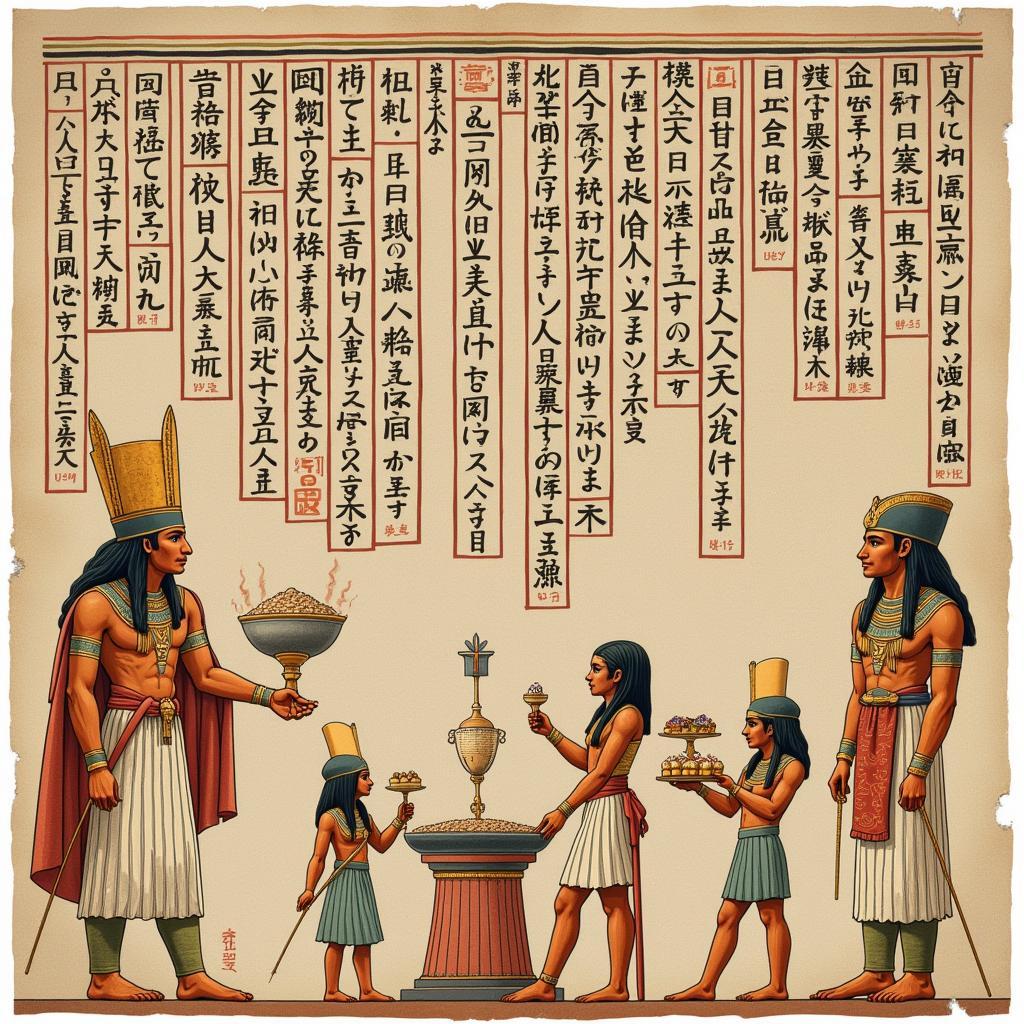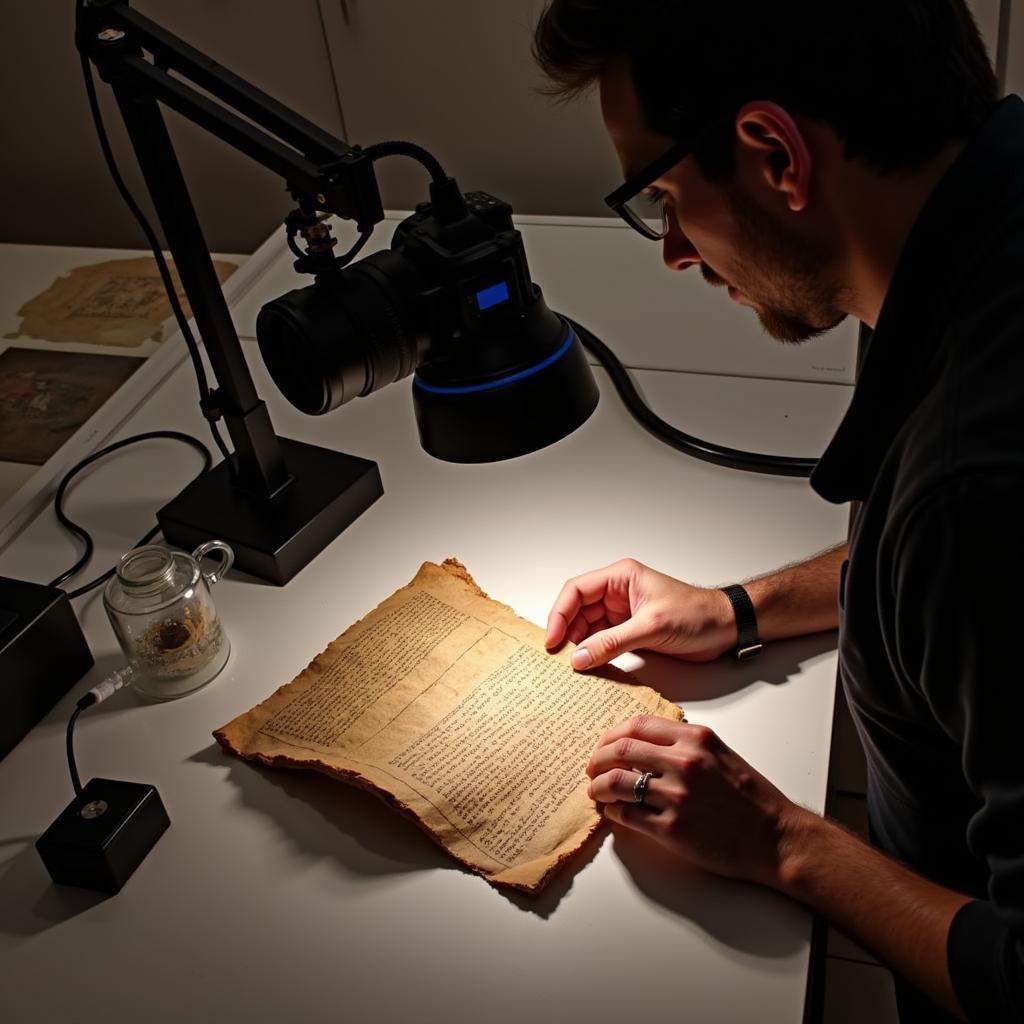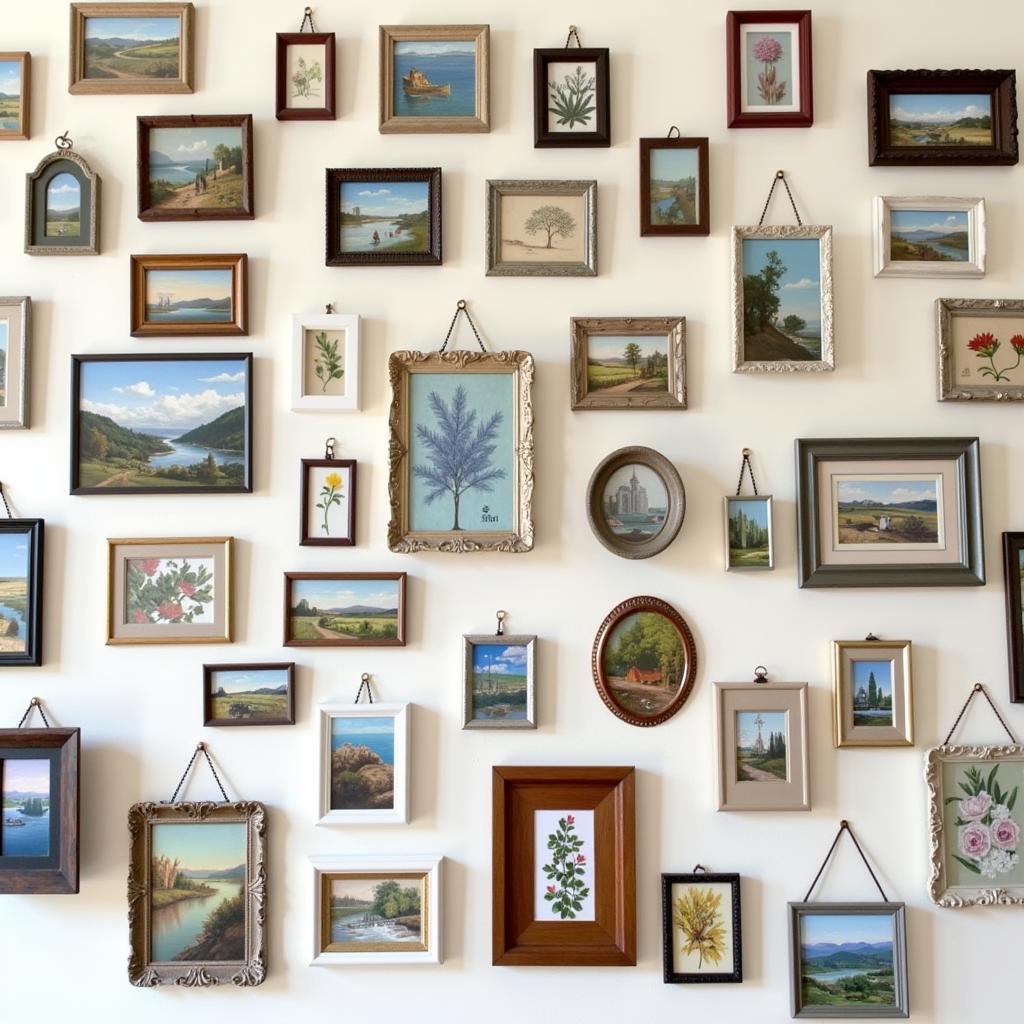Unveiling the Majesty of Hieratic Art
Hieratic Art, a captivating script and artistic style of ancient Egypt, offers a fascinating glimpse into the rich culture and religious beliefs of a bygone era. This unique form of writing and artistic expression served as a bridge between the complex hieroglyphs used for formal inscriptions and the more cursive demotic script adopted for everyday use. From religious texts and administrative documents to literary works and personal letters, hieratic art played a vital role in shaping Egyptian society for over two millennia.
Exploring the History and Evolution of Hieratic Art
Hieratic script emerged in the early dynastic period, around 3200 BCE, evolving alongside hieroglyphic writing. Initially used primarily by priests for religious texts and administrative records, it gradually became more widespread, adopted by scribes, officials, and even ordinary individuals for various purposes. The simplified forms of hieratic characters made them faster and easier to write than hieroglyphs, contributing to its popularity for everyday communication. Over the centuries, hieratic art underwent stylistic changes, reflecting the evolving artistic trends and cultural influences of different periods in Egyptian history.
What are the key characteristics of hieratic art? While sharing a close relationship with hieroglyphs, hieratic script developed its own distinct characteristics. Its cursive nature led to more fluid and connected strokes, creating a visually appealing flow. The simplification of hieroglyphic signs also resulted in abstract forms, often difficult to decipher without specialized knowledge.
 Examples of Hieratic Script from Ancient Egypt
Examples of Hieratic Script from Ancient Egypt
Decoding the Symbolism and Meaning in Hieratic Art
Hieratic art, like hieroglyphs, carries a wealth of symbolic meaning. Many of the signs represent deities, animals, objects, and concepts central to ancient Egyptian beliefs. Understanding the symbolism embedded within hieratic texts provides valuable insights into the religious, social, and political aspects of Egyptian civilization. From depictions of powerful gods and goddesses to representations of everyday life, hieratic art reveals a vibrant culture deeply connected to its spiritual heritage.
How did hieratic art influence later writing systems? The influence of hieratic script extends beyond ancient Egypt. It is believed to have played a significant role in the development of the demotic script, a more simplified form of writing that eventually replaced hieratic in everyday use. Furthermore, some scholars suggest that hieratic script may have influenced the development of the Phoenician alphabet, which in turn formed the basis for many modern writing systems.
 Hieratic Art Depicting Religious Scenes from Ancient Egypt
Hieratic Art Depicting Religious Scenes from Ancient Egypt
Hieratic Art in the Digital Age: Preservation and Accessibility
With the advent of digital technologies, hieratic art is experiencing a renaissance. Digital imaging and archiving techniques are playing a crucial role in preserving fragile papyrus documents and making them accessible to a wider audience. Researchers and enthusiasts can now study and appreciate these ancient texts in greater detail than ever before, thanks to high-resolution images and online databases. Furthermore, digital tools are facilitating the decipherment and translation of hieratic texts, unlocking valuable knowledge about ancient Egyptian civilization.
What are the challenges in studying hieratic art today? Despite advancements in digital technology, studying hieratic art presents several challenges. The cursive nature of the script and the variations in style across different periods can make decipherment a complex process. The fragmented nature of many surviving texts also adds to the difficulty. Moreover, the specialized knowledge required to interpret the symbolism and understand the cultural context of hieratic art necessitates dedicated scholarship and ongoing research.
 Digital Preservation of Hieratic Papyrus Fragments
Digital Preservation of Hieratic Papyrus Fragments
The Enduring Legacy of Hieratic Art
Hieratic art stands as a testament to the ingenuity and artistic sensibilities of the ancient Egyptians. Its development and evolution reflect the dynamic nature of Egyptian culture and the practical needs of a literate society. From its origins as a priestly script to its widespread use in everyday communication, hieratic art has left an indelible mark on history. Its influence can be seen not only in the development of later writing systems but also in the enduring fascination with ancient Egypt that continues to captivate us today. By studying and appreciating hieratic art, we gain a deeper understanding of a civilization that shaped the course of human history.
In conclusion, hieratic art provides a unique window into the world of ancient Egypt. Its intricate script, rich symbolism, and evolution through time offer a compelling narrative of a civilization’s cultural and intellectual achievements. As we continue to explore and decipher its mysteries, hieratic art promises to reveal even more about the fascinating world of the pharaohs.
FAQ
-
What is the difference between hieratic and hieroglyphic writing?
Hieratic is a cursive form of hieroglyphs, simpler and faster to write. -
What was hieratic script used for?
Hieratic was used for various purposes, including religious texts, administrative documents, literary works, and personal correspondence. -
When was hieratic script used?
Hieratic script was used for over two millennia, from the early dynastic period (c. 3200 BCE) until it was largely replaced by demotic script. -
How difficult is it to learn hieratic script?
Learning hieratic script requires specialized knowledge and dedication due to its cursive nature and variations in style. -
Where can I see examples of hieratic art?
Examples of hieratic art can be found in museums, online databases, and academic publications. -
What is the significance of hieratic art?
Hieratic art is significant for its role in ancient Egyptian society, its influence on later writing systems, and its contribution to our understanding of Egyptian culture. -
How is technology helping to preserve and study hieratic art?
Digital imaging and archiving techniques are preserving fragile papyrus documents and making them accessible to a wider audience.
Need Help?
For assistance, contact us 24/7:
Phone: 02462573573
Email: danteum@gmail.com
Address: Savico Megamall, 7-9 Đ. Nguyễn Văn Linh, Gia Thụy, Long Biên, Hà Nội 10000, Việt Nam.
Also check out our other Online Art workshops and articles on our website!




